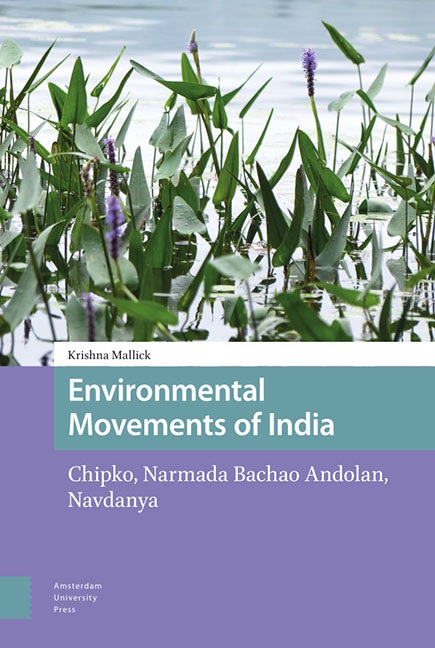Book contents
- Frontmatter
- Dedication
- Contents
- Acknowledgments
- Foreword
- Glossary
- Introduction: Three Grassroots Movements That Made a Global Impact
- 1 Historical and Cultural Contexts in India
- 2 Chipko (Hug the Trees) Movement
- 3 Narmada Bachao Andolan (NBA): Save the Narmada
- 4 Navdanya (Nine Seeds) Movement
- 5 Moral Implications of Environmental Movements
- 6 Hindu Ethics and Ecology
- Conclusion: The Symbiosis of Natural Resources and Local Needs
- Index
1 - Historical and Cultural Contexts in India
Published online by Cambridge University Press: 13 November 2021
- Frontmatter
- Dedication
- Contents
- Acknowledgments
- Foreword
- Glossary
- Introduction: Three Grassroots Movements That Made a Global Impact
- 1 Historical and Cultural Contexts in India
- 2 Chipko (Hug the Trees) Movement
- 3 Narmada Bachao Andolan (NBA): Save the Narmada
- 4 Navdanya (Nine Seeds) Movement
- 5 Moral Implications of Environmental Movements
- 6 Hindu Ethics and Ecology
- Conclusion: The Symbiosis of Natural Resources and Local Needs
- Index
Summary
Abstract
This chapter explores the historical background of British rule in India (1757-1947) and the different Forest Acts that were imposed by the colonial authorities that infringed the rights of the people. This eventually led to protests against the forest management, most of which were suppressed by the British government. Community forest management councils (van panchayat) were formed to protect the inhabitants but then the British classified most of the forest as reserve forests, centralizing their control over the forest and displacing the people. Gandhi's method of nonviolence, satyagraha, is analyzed by showing how Gandhi was influenced by the Gita, Tolstoy, Ruskin, and Thoreau and how Gandhian views have been followed in the Chipko, NBA, and Navdanya movements.
Keywords: satyagraha, Indian Forest Acts, van panchayat, Gandhi, Hinduism
Over the long period of British rule in India (1757-1947), economic and political power became concentrated in the East India Company, whose shares were owned by wealthy merchants and aristocrats. The East India Company had operated in India from the beginning of British colonialism, but a watershed moment in its history occurred in 1772 when, in order to avoid bankruptcy, the company requested loans from the Bank of England. British rule under the Crown began in 1858, replacing the East India Company's rule. Later on, the East India Company was dissolved and the British Raj was established, which dominated the Indian subcontinent for almost another century.
‘British colonialism and other forms of Western imperialism in general have profoundly altered the world's ecology, contributing to far-reaching environmental degradation’, Nayak (2015, p. 252) writes. As Nayak points out, the ideology of economic development that took root during the colonial period imposed a superstructure of ideas, institutions, and a legal rationale for acquiring control over the entire forested realm of Indian territory. By 1860, Nayak says, ‘Britain had emerged as the world leader in deforestation, devastating its own woodlands as well as the forests of Ireland, South Africa, and the northeastern United States’ (p. 253). Timber was used for shipbuilding, iron ore for melting, and large tracts of land for cash-crop farming. With oak forests vanishing in England, the Royal Navy had to look elsewhere for a permanent supply of durable timber, for the safety of the empire depended on its wooden ships (Nayak, 2015).
- Type
- Chapter
- Information
- Environmental Movements of IndiaChipko, Narmada Bachao Andolan, Navdanya, pp. 23 - 36Publisher: Amsterdam University PressPrint publication year: 2021

